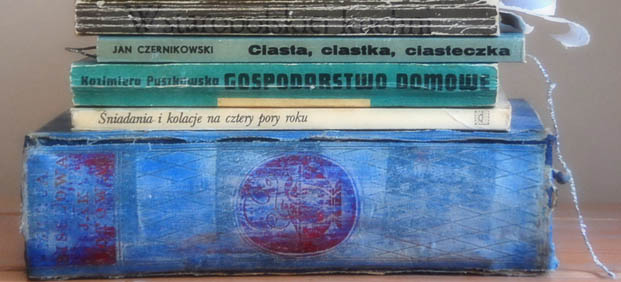 However, non-poetic sources say, that regular dishes were also one of the permanent items of Old Polish cuisine: sour cabbage with smoked bacon, barley, dumplings and noodles with cheese, Buckwheat noodles with poppy seed milk, and for dessert, it was necessary to have peas crushed with pork fat. Without such a finale, no party could be considered decent.
However, non-poetic sources say, that regular dishes were also one of the permanent items of Old Polish cuisine: sour cabbage with smoked bacon, barley, dumplings and noodles with cheese, Buckwheat noodles with poppy seed milk, and for dessert, it was necessary to have peas crushed with pork fat. Without such a finale, no party could be considered decent.
Magdalena Witwińska: Sleigh ride by 3 centuries:
…..formerly, as Krzysztof Opaliński writes:
The rich were not known on tables
What is a pate, what dough or jelly.
Probably at a wedding. So the bowls were placed
One with beef, the second with vegetables,
And the fourth with peas, in which the lard was swimming
Like a whale in the sea”.
In the 17th century, the nobility began to indulge themselves more and more with sophisticated cuisine and luxury, regardless of the simple custom of the grandfathers. You don't look at the costs, when he receives guests - a banquet for families or neighbors often costs a village with peasants. It begins to define Polish: Pledge yourself, and put yourself up”. Władysław Jeżowski writes about the noble banquet:
Jakoż it is not supposed to be much to such a gentleman?
What do vets or game cost?,
Frukty, various sugars - I do not mention wine -
Oranges; almonds, fiji, marcepany:
Chestnuts, other Italian things, parmesans?
The strength for this money will emerge every year.
Your head will hurt, when the reckoning comes.
W 1682 r. appears in printing Cookbook, written by the chef of the court house of the Lubomirski family - Stanisław Czarniecki, the author of which assigns a prominent place to the table and the kitchen in all culinary matters, culinary championship not lower than arts.
“These people have an inherently attribute, that they love each other in different flavors not only because of their appetite, but out of proficiency, skills and messages”. According to Czarniecki, you need to please not only your own master, one should also know various foreign cuisines, that strangers could be received with dignity and could adapt to the taste of the mortar.
They competed with the lavishness of feasts and the visual values of richly set tables. The Easter celebration at the Sapieha court in Dereczyn was famous…..Four enormous boars stood, it is as many as parts a year, each boar had a pork alias in it (that is) hams, sausages, piglets. The most wonderful chef showed the art of baking these freaks completely. It became a tandem (next) twelve deer, also completely baked, with golden horns, but they were stuffed with all sorts of game to admire, hares, grouse, dropiami, grouses. These deer expressed twelve months.
There were brown cakes all around, as many as weeks a year, that's fifty-two, all lovely pies, masuria, zmudzkie dumplings, and everything lined with dried fruit. So it was 365 babek, this is as many days a year.
Each was adorned with inscriptions (subtitles), flowersami, that not one of them only read, and he did not eat. As for the bibenda (drinking) there were four cups, model (example) four seasons, filled with wine still from King Stephen. Tandem 12 King Zygmunt's silver watering cans with wine, You konewki example 12 months. Tandem 52 also silver barrels in gratiam (on intention) 52 weeks, they had Cypriot wine, Spanish, Italian.
Next 365 gander with Hungarian wine, alias as many geese as there are days in a year. And for the court servants 8 700 quart of honey made in Breza, that is how many hours a year.”
But already in the times of Stanisław August, the royal court began to like light dishes, not abundant, and above all, exquisitely presented and varied. Rather, food supplemented a social gathering, disputes, flirt.
However, with Karol Radziwiłł, “my lover”, reluctant to newfangled mores, feasted as before. And so writes Julian Ursyn Niemcewicz:
…..After drinking Gdańsk vodka, after biting her with gingerbread and mashed potatoes, we sat down at the table: to the left and right of this stood a row of casks. We didn't know what was in them, until it is reflected with a loud thump, oysters showed up. They were poured onto huge silver table tops and placed on the table. They were soon cleared away and the table was covered with rogue stews, smoked salmon, the vinegar-pickled noses of this animal, baking, dumplings and other dishes of this kind, not counting the thick Hungarian wine bottles.”
